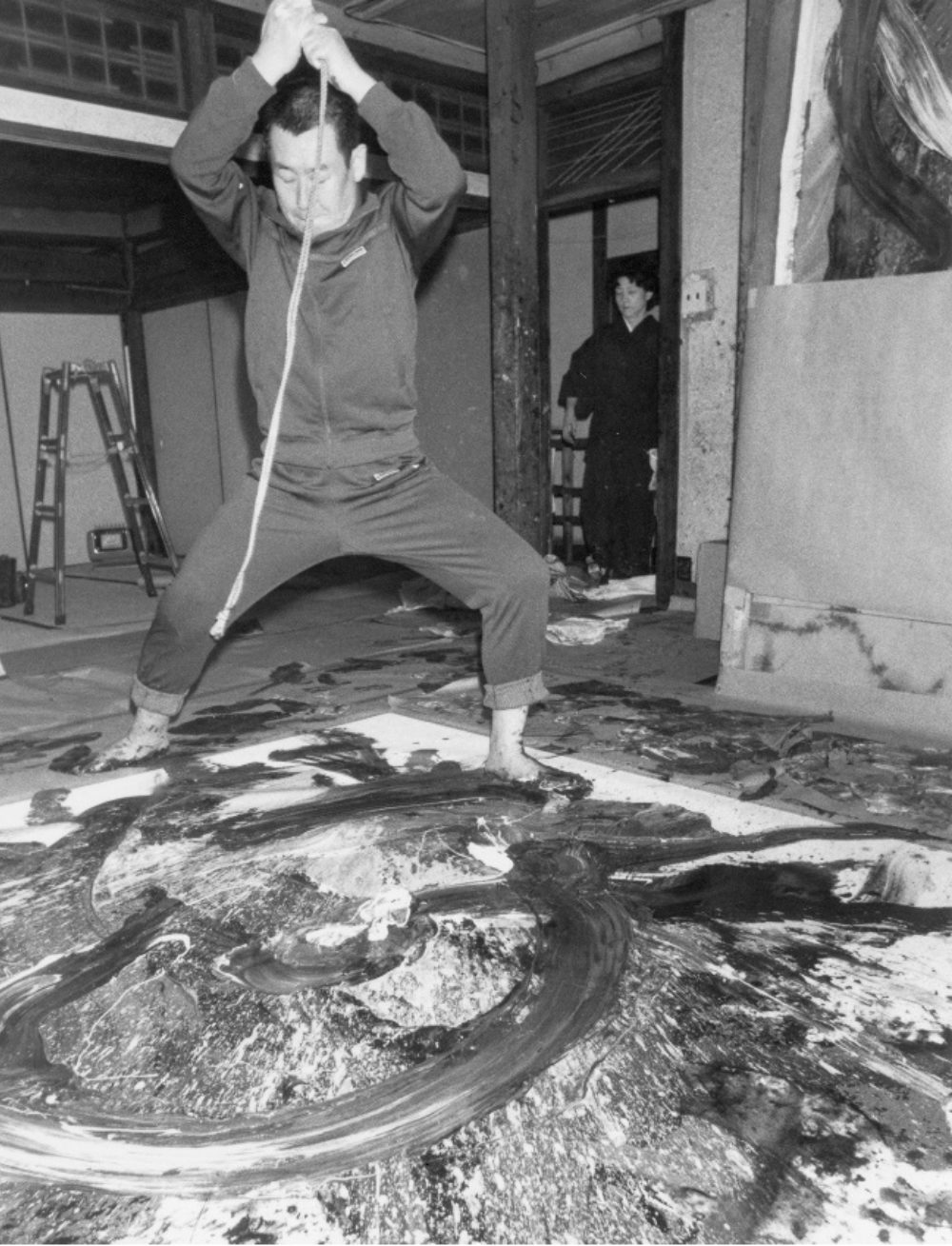Shortly after the Second World War, Japan's society was devastated for the war's atrocities luckily some artists found refuge in the arts, these group of artists is known as Gutai. Gutai in Japanese means: "Gu" = tools, "Tai" = body meaning, that they used their bodies as tools for doing art. In the images above we can see, Kazuo Shiraga, who is famously known for hanging from a rope while painting freely with his feet, and also for his famous “Challenge Mud” performance where he is recorded wrestling with a pool of mud. On the other image (right corner), we see Saburo Murakami breaking his way as he is going through many canvases.
In those images, we can appreciate the relationship between their bodies and the materials, where their bodies interact in such a way that art's main focus is not anymore about the final product but it is all about the creative process. In the Gutai Art Manifesto, Yoshihara Jirõ writes about the relationship between body/spirit and matter, he says: "In Gutai Art, the human spirit and matter shake hands with each other while keeping their distance. Matter never compromises itself with the spirit; the spirit never dominates matter. When matter remains intact and exposes its characteristics, it starts telling a story and even cries out. To make the fullest use of matter is to make use of the spirit. By enhancing the spirit, matter is brought to the height of the spirit." Furthermore, he would be constantly reminding other Gutai artists to "create what has not been done before," therefore, this group of artists experimented with different mediums traditional and nontraditional, as they wanted to experience how their bodies interacted with different materials.
Here is an example of creating something that has not been done before, artist Atsuko Tanaka created an Electric Dress "a costume made of several dozen incandescent bulbs and colored neon tubes" that she used as part of her performance at the Second Gutai Art Exhibition, in 1956. It was quite dangerous as she could have been electrocuted.
Just as her, many other artists did art in a way that it wasn't done before. In order to do so, they broke with all the rules of standard art. First of all, Gutai's conception of an exhibition was similar to an amusement park rather than exhibiting in a gallery or museum they were exhibiting outdoors. Moreover, their outdoor exhibitions had many sculptural objects and performances all over the area, so people would be walking to see these "new spaces", just like in an amusement park you go from game to game. In addition, their exhibitions had a "sense of play" meaning that their art was open for the audience to get involved, whereas in a gallery or museum it is forbidden to touch the artworks, and there are even times where you aren't allowed to take pictures.
As a result, Gutai became the predecessor for performance and conceptual art.
Hope you enjoyed reading this article about this cool artist collective if you are interested to know more check out the sources. Also, I would like to know your thoughts leave a comment below.
Sources:
Art Since 1900 by Hal Foster

